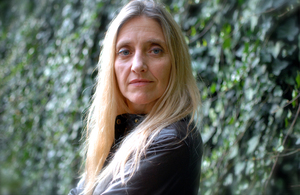My lessons from a year as Child First Champion
Louise Shorter, Youth Justice Board Member, shares her learning on what works in youth justice.

Photo of Louise Shorter looking at the camera in front of foliage
A year ago, I was asked to be the Youth Justice Board Champion for Child First with responsibility for building awareness and understanding of Child First and its use as the guiding principle for youth justice. As a journalist and broadcaster by profession, my tendency to ask difficult questions and translate complex answers into something easy to understand has accelerated my learning, which I’m keen to share.
It’s a focus on the positive
The Child First principle in its most simple form is understanding that evidence shows we shouldn’t treat children as offenders, or almost-offenders. This creates stigma for the child and encourages them to build a criminal identity which leads to criminal behaviour. Instead, by focusing on achieving positive child outcomes, children are able to focus on a positive future in which they thrive and contribute positively to society. This is the most effective way of ensuring children don’t offend or reoffend, and means safer communities for everyone.
Remember your ABCDs
Make sure you understand the full range of evidence behind Child First but use shortened versions to jog your memory. The YJB has produced a guide which provides both shortened and more detailed explanations of the evidence. Divided into high-level themes, known as tenets by many, each section describes what evidence tells us to do to reduce crime committed by children. They can be remembered as ABCD:
- recognise children ‘As’ children
- help them to ‘Build’ a positive identity
- ‘Collaborate’ with them
- ‘Divert’ them from the stigma associated with crime wherever possible
It’s not all in the name
Child First is simply a term which provides a short way of referring to the body of evidence which tells us what actually works to stop children from offending and keeps communities safe. It’s especially important to emphasise that this approach is not based on an ideology or political view, it’s driven entirely by evidence. You don’t always have to use the label ‘Child First’ if it doesn’t help you to illustrate your point, and that might be particularly useful when your audience has confused Child First as a mantra, rather than a body of evidence.
We’re all on a journey
There are some people who have never heard of Child First and there are some people who have been trying to embed this evidence in their practice for years. As long as we’re all following the evidence, we must be supportive and acknowledge that we’re all on a journey. Those of us who are nearer the beginning of our journey can greatly benefit from the knowledge of those ahead of us. The more we can encourage and support one another to return to the evidence and to continue learning, the better we’ll serve children and communities.
Ask the difficult questions
As policy and practice embeds the evidence further, there will be an increase in public awareness and scrutiny of Child First evidence. As public service providers we must welcome this and be ready to clearly articulate how using this evidence to guide our work can create safer communities. By applying scrutiny and asking the difficult questions of our own work in youth justice we will better understand the evidence and we’ll be able to bring others, including the public, along with us too.
Finally, I’d like to share my thanks. Thank you to everyone who has generously given their time to help me deepen my understanding of the evidence. Thank you to colleagues across youth justice who have been working tirelessly to embed this evidence in practice where it will make a huge difference to the lives of children and to the safety of our communities.